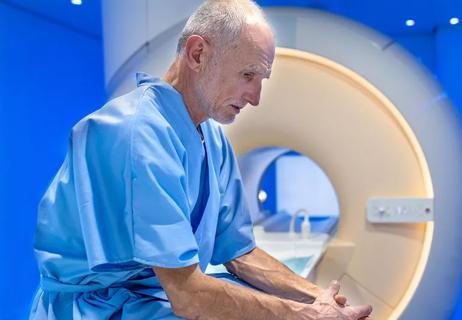Complications related to the implanted device leads may go unnoticed

A pacemaker is a life-saver. It faithfully keeps your heart beating at a normal rhythm and helps manage your health condition. But in rare cases, an infection related to your pacemaker can put your life at risk.
Advertisement
Cleveland Clinic is a non-profit academic medical center. Advertising on our site helps support our mission. We do not endorse non-Cleveland Clinic products or services. Policy
And, because the infection is sometimes internal, you may not realize you’re in danger.
Cardiologist Bruce Wilkoff, MD, answers questions on what you need to know about pacemaker-related infections.
A: Implanted pacemakers normalize your heartbeat with a steady stream of electric impulses. In most cases, the device sends these impulses through leads attached to your heart.
Some pacemakers, called leadless pacemakers, use no leads, but most still have leads. Infection related to the leads is rare, but possible.
Not everyone is a candidate for a leadless pacemaker. Currently, the device is available only for patients with specific medical conditions and a slow heart rate (bradycardia). Ask your doctor if you are a candidate for a leadless pacemaker.
A: Pacemakers are implanted and replaced through small incisions. Most infections occur after surgery.
The infection rate is slightly higher for replacements: About 0.5% of initial implants develop infections, with infections occurring in about 2% of replacement surgeries.
A: Most infections start in one of two places: at the incision site or where the leads connect to your heart.
Internal infection can spread unnoticed, typically from various types of staph bacteria. A sticky film develops that makes clearing the infection impossible — even with antibiotics — unless the pacemaker and leads are completely removed.
Advertisement
A: Many of the symptoms are subtle and mimic regular infections. You may notice:
If the infection goes untreated, you may eventually notice more severe symptoms, including:
A: Infection symptoms may go unidentified for many months.
About half of patients who develop an infection address their concerns with a doctor within a year of surgery. Nearly an equal number might not recognize anything is wrong for more than a year.
If you notice you’re still not feeling well after you’ve had time to recover from your implant surgery, you should talk to your doctor. They may diagnose the problem with examination of the implant site, blood tests, blood cultures and an echocardiogram.
A: Your doctor must address the infection once it is identified. Pacemaker-related infections are a special type of bacterial infection, called endocarditis. It’s the same life-threatening infection that affects the lining of your heart valves.
These infections aren’t immediately lethal. Over time, however, the infection attacks your heart valves and can spread to your lungs and brain via the bloodstream. If it isn’t treated, it’s sometimes fatal.
A: There is a slight infection risk for all patients who have received or will receive an implanted device.
You are at a higher risk if you:
A: The only treatment option is removal and replacement surgery.
Your doctor will remove all the leads and any infected tissue. They will carefully remove any part of the device that has adhered to the heart tissue or veins to avoid tearing.
The physician will implant a new device in a different location (such as in the opposite shoulder), and will prescribe a regimen of antibiotics. Sometimes a new device is not needed or a leadless pacemaker or traditional pacemaker that just goes under your skin, are options in some situations. Ask your doctor if this is possible.
Q: Can you guard against an implant-related infection?
A: Although there’s no sure-fire way to avoid infection, you can improve your odds of finding problems early. To reduce the risk of infection after a pacemaker or implantable defibrillator-change operation, we often use a new antibiotic envelope that has proven to reduce the risk of infection by about half. Otherwise, an antibiotic is also given at the time of every pacemaker operation.
Advertisement
Watch your pacemaker site and do careful checks each month. Does it look the same as it did before? If you think something is changing, contact your doctor.
See your doctor annually for a regular check-up. If other problems arise or you notice something different in regards to your pacemaker, do not hesitate to schedule additional appointments.
Advertisement
Learn more about our editorial process.
Advertisement

Your scar will heal best if you keep the area clean, dry and covered for an appropriate amount of time

Fainting, heart palpitations and shortness of breath are just a few signs your heart may need help

It’s important to remember that not everyone heals at the same rate

Pacemakers steady heartbeat, ICDs reset the heart

Glitches are possible but unlikely

Keep the area clean and monitor your incision site for discharge, odor or a change in appearance

Making healthy lifestyle changes ahead of surgery can help you avoid AFib after

What to know about cardiac implants and imaging tests

Start having sex about 72 hours before ovulation, then at least every other day during your fertile window

Attachment theory suggests that your earliest relationships shape connections throughout your life

It isn’t a recognized mental health disorder, but research shows that problematic social media use can negatively affect your mental health, self-esteem and sleep